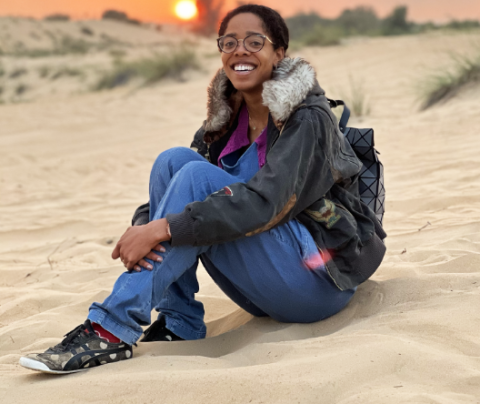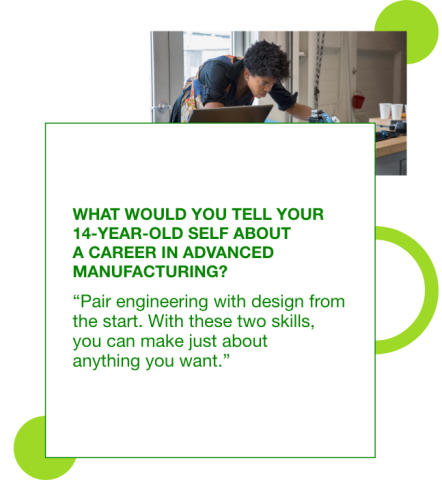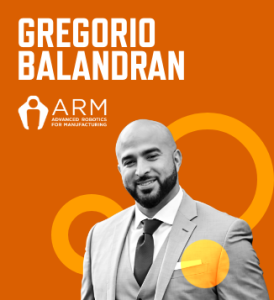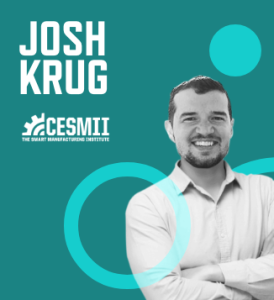
Materials science master, business strategist, wanderer
Madison Maxey is a star in the world of soft and flexible electronics, sometimes referred to as e-textiles. Madison is unique in her ability to combine creativity, technology, and engineering into design. She has led efforts for the F.I.T Museum, Forbes 30 Under 30 Summit, CNBC’s Jump Jive and Thrive, and even Google Creative Lab. As part of her reach, she has held creative technology residencies at the School of Visual Arts, Autodesk, and Pratt’s Brooklyn Fashion and Design Accelerator (BF+DA). Sharing her passion, Madison has also led workshops for The North Face, Google, Flextronics, Adidas, and Corning, and lectured at Columbia University, Parsons School of Design, New York University, and the University of Illinois.
Madison also happens to be the founder and CEO at Loomia Technologies, Inc., which is a member of AFFOA, the advanced fibers and textiles institute that champions e-textiles. Throughout the course of her work at Loomia, she has developed prototypes that enable electronic components such as batteries, lights, and sensors to be embedded in fabrics and textiles.
Madison’s work has built the foundation for six patents that form the basis of the Loomia Electronic Layer (LEL), an award-winning material. The soft, flexible circuit technology is designed to integrate easily with textiles and has been used in a range of industries to create custom heating, cabling, lighting, and sensing components.
Madison has a degree in materials science from Stanford University. As an innovator and entrepreneur who can combine her prowess in material science with a customer-oriented business mindset, Madison Maxey is a model Modern Maker.
Q&A with Madison
How did you find your way to working in advanced manufacturing?
I started my career in design and found hardware and materials engineering by digging deep into design problems. I just kept digging and digging, and this led me to eventually have ideas for developing my own materials. However, a material that can only be made in a small swatch isn't very useful, so the need to scale led me to advanced manufacturing. I see myself very much as a physical product person. If someone wants to make innovative things in the real world, they will eventually need to touch advanced manufacturing in some way!


What is the most challenging part of your job?
Getting a new process into production is an exercise in resilience. We are constantly trying to troubleshoot unexpected issues, and the unknown can be difficult. However, this is also what makes the work mentally stimulating and fun!
What is the best part of your job?
The invention for sure! I work more on the business and strategy side these days, but I love it when I get the chance to see parts from the factory, or see prototypes. It's really satisfying to see ideas become real through engineering, design, prototyping, and production.
What would people be surprised to learn about manufacturing or your role in it?
We make electronic textiles, and the word "textile" always makes people think of shirts and socks. In reality, we manufacture electronic components for cars, robots, and more. They would be surprised to know that we don't spend much time weaving and sewing and spend most of our time testing the electrical performance of components and laminating things.
What advice do you have for someone new to the industry?
More than anything, I think it's important to be a critical problem solver when working with new technologies. If something you're doing isn't working, don't worry, wine, or wander around. Just change one variable, try again, and measure the result. Eventually, you'll get there!
What makes you excited to go to work?
We do work for engineers and designers making next-generation products. I'm super motivated by how we can help them do their work with our materials. I also love research, so I'm always excited to hear what the team has been up to and what breakthroughs we've made on a Monday morning.
What are the three most important skills for your job?
- I think the ability to focus and to critically hear and process information is important.
- Manufacturing and physical products are almost never done alone, so it's important to have good communication and an organized way of working so that people can work together.
- It's also important to plan well! Manufacturing is expensive and time-consuming, so it's important to be conservative in planning to ensure that the work can get done.
If you didn’t have to work, how would you spend your day?
I think I would spend one hour walking around somewhere nice, one hour at a nice symphony or jazz show, one hour cooking and eating something nice, and the rest of the day I would spend in a lab with exciting tools and materials to use for developing new things.
What activity gives you the most energy?

I really enjoy “deep work.” Nothing gets me more excited than reading and learning from some relevant research, crafting a prototype, or reviewing specs and really taking them in.
Outside of work, I love walking around. For a while, I felt like this didn't count as an activity or exercise, but I always feel better after a good walk. Recently, I have also gotten into roller skating, which is both energizing and exhausting!
What hobbies make you better at your career?
I used to spend a lot of time making things when I was younger, and I think this has helped. From 3D printing to sewing, the hands-on work helps me imagine how physical items come together.
How does the work you do impact the world?
To be honest, the work we do has a very small impact on the world right now. We make components, so we help products be a little easier to make or work a little better. It's a small impact, but it's exciting for us and for our customers.




